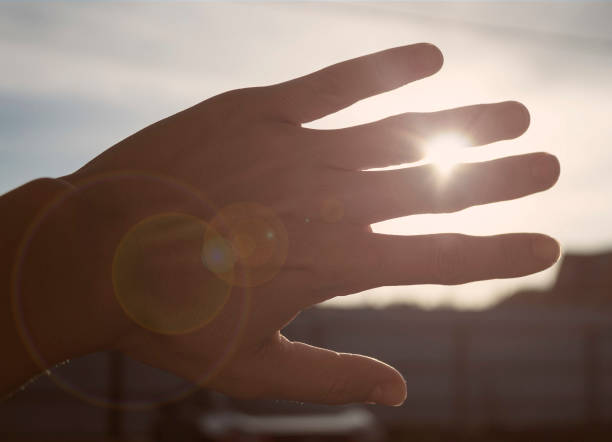The Sun’s Deadly Kiss: Understanding UV Radiation and Its Impact
Source: istockphoto
The sun produces light and heat which is essential for life on earth. However, prolonged exposure to sunlight can be harmful to our health. One of the biggest dangers of sunlight is ultraviolet (UV) radiation. In this article, you will learn what UV radiation is, why it is harmful, and how it affects our health.
Ultraviolet (UV) light is a type of electromagnetic radiation that comes from the sun. This radiation is in the form of waves or particles with different wavelengths and frequencies. These wavelengths are contained within a range called the electromagnetic spectrum, which consists of seven sections that are ordered by decreasing wavelength and increasing energy and frequency. The electromagnetic spectrum includes seven types namely Radio waves, Microwaves, Infrared, Visible light, X-rays, Gamma rays, and Ultraviolet (UV).
Of the seven types of electromagnetic spectrum, Ultraviolet (UV) light has a major impact on human skin. The warmth of sunlight does make our skin healthy and glowing, but sunlight can also bring disaster with the presence of ultraviolet (UV) radiation. The presence of UV-A, UV-B, and UV-C is closely related to human skin. The dangers of the three UV radiations need to be watched out for because they can damage the skin.
UV-A light, also known as UV-aging, is a type of ultraviolet light that can cause the aging of human skin. The radiation can damage skin cells, collagen fibers, and elastin fibers which can accelerate the aging process of the skin (photo-aging). The appearance of fine lines, skin, and dark spots on the face and other parts of the body characterizes the process.
UV-B (UV-burning) rays are shorter waves than UV-A rays. The waves produced only reach the epidermal layer of the skin. However, UV-B has an impact that can be felt immediately in the near future. Damage to skin cells is characterized by dullness, reddish rashes, and even burning and peeling of the skin. Some cases mention that UV-B rays can cause skin cancer. Obviously, this is very frightening for human beings on this earth.
Additionally, UV-C is a type of ultraviolet light with a short wavelength with high energy. UV-C rays have the potential to damage cell structures, including skin cells. Radiation from these rays can increase the risk of developing skin cancer. This is because UV-C rays can damage chromosomes, resulting in DNA mutations in the body. The accumulation of DNA mutations that occur continuously can cause cancer cells.
As a form of early protection from the three types of UV radiation, the use of sunscreen is highly recommended by dermatologists. Sunscreen is able to protect the skin from exposure to UV radiation. The level of protection in sunscreen is distinguished by the number of SPF (sun protector factor). SPF 15 can protect the skin from 93% rad. In addition, it is recommended to avoid sun exposure which takes place at its peak intensity, which is between 10 am and 4 pm. When the sun reaches its peak intensity, sunlight will pass through a thinner layer of the atmosphere, resulting in higher exposure to UV rays than in the morning or evening.
References
- Alodokter. (2020, August 18). Dampak Paparan Sinar UV jika Berlebihan. Alodokter. Retrieved June 14, 2023, from https://www.alodokter.com/sinar-uv-tidak-hanya-membahayakan-kulit
- Anessa. (2023, May 2). Bahaya Sinar Ultraviolet (UV) Bagi Kulit, Khususnya Skin Barrier. Anessa Indonesia. Retrieved June 14, 2023, from https://www.anessa.id/for-you/bahaya-sinar-uv-bagi-kulit
- Mikhalitskaia, Iuliia. (2018). Hand Obscuring The Sun [Photograph]. iStockphoto. https://media.istockphoto.com/id/955498438/id/foto/tangan-mengaburkan-matahari.jpg?s=1024×1024&w=is&k=20&c=JE3_Y29QSSf4R0yle5TBddG2srRKG9oo2IphAM2X3rE=
- Sulistiyowati, A., Yushardi, Y., & Sudarti, S. (2022). Potensi Keberagaman SPF (Sun Protection Factor) Sunscreen terhadap Perlindungan Paparan Sinar Ultraviolet Berdasarkan Iklim di Indonesia. Jurnal Bidang Ilmu Kesehatan, 12(3), 261-269.
- Zaenuddin, M. (2023, April 26). Mengenal Sinar Ultraviolet atau UV: Pengertian, Jenis, dan Dampaknya Halaman all. Kompas.com. Retrieved June 14, 2023, from https://www.kompas.com/tren/read/2023/04/26/123000765/mengenal-sinar-ultraviolet-atau-uv–pengertian-jenis-dan-dampaknya?page=all


